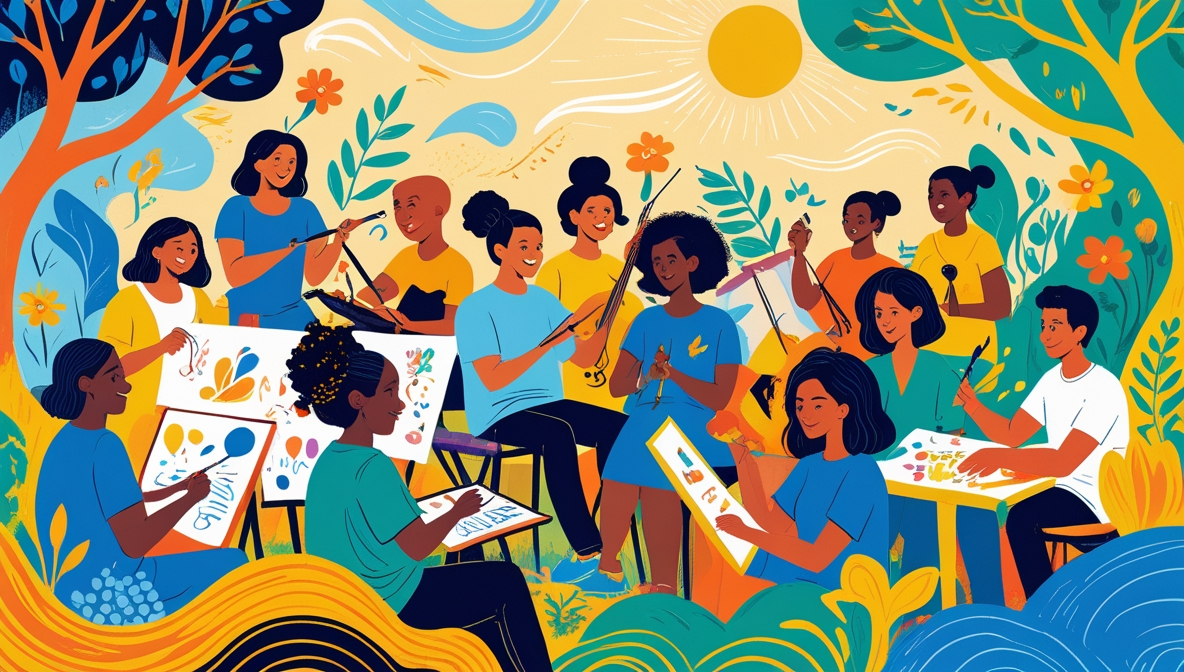Yes—local communities can absolutely encourage creativity. And many already do. Across Iowa’s Creative Corridor, you’ll find powerful examples of how public art, workshops, and school programs shape a more expressive and connected culture. These efforts aren’t abstract concepts; they’re hands-on, visible, and alive.
Public Murals: Art That Belongs to Everyone
Murals speak without words. They turn empty walls into shared stories. In Cedar Rapids, Marion, and Iowa City, artists have collaborated with neighborhoods to create large-scale artworks that reflect local identity. These aren’t just backdrops for photos. They’re visual markers of values, history, and change.
Key impacts of mural projects:
- Strengthened local identity through community involvement in design
- Opportunities for emerging artists to gain experience and visibility
- Economic stimulation via increased foot traffic to mural sites
The process often includes community meetings, where residents share ideas with the artists. It becomes a conversation, not a solo performance.
Art Workshops: Participation Over Perfection
Workshops shift the spotlight from product to process. They invite people to make something—even if they’ve never picked up a brush or carved a print.
Local organizations, such as the Iowa Ceramics Center and Glass Studio or the Cedar Rapids Museum of Art, host hands-on sessions that welcome beginners. Whether it’s clay modeling, fiber arts, or block printing, the format is usually casual and inclusive.
Workshops do several things well:
- Break down intimidation barriers for those new to art
- Build intergenerational bridges through shared creative time
- Strengthen mental well-being by allowing people to focus, make, and reflect
Community centers and libraries often offer free or low-cost options, making access broad and equitable.
Schools: Growing Creativity from the Ground Up
Creativity is not limited to art class. Progressive school programs across the region integrate arts into science, history, and even math. Initiatives like STEAM (Science, Technology, Engineering, Art, Math) let students develop critical thinking by working with color, shape, and story.
Arts-integrated learning supports:
- Deeper understanding of academic subjects by using visual metaphors and hands-on models
- Better retention through emotional and sensory engagement
- Confidence building as students learn to express ideas in multiple ways
Parents often support this through PTA-sponsored programs and local partnerships with artists-in-residence. These efforts extend the classroom experience into after-school clubs, public exhibitions, and student-driven projects.
As simple as it sounds, even free coloring pages can be a simple yet effective way to inspire young artists and engage families in creative activities. They serve as an entry point—low-pressure, accessible, and full of possibility.
Moving Forward: What Makes It Work
Encouraging creativity isn’t about teaching everyone to draw. It’s about creating the conditions where people feel free to try. Public murals make art part of the city. Workshops turn strangers into collaborators. Schools plant early seeds of imagination.
What makes these local efforts thrive?
- Access: Materials and space shouldn’t be gatekept.
- Consistency: One-off events rarely build habits. Recurring programs matter.
- Community input: When people help shape the process, they’re more invested in the result.
Across Iowa’s Creative Corridor, these principles guide much of the work already in motion. The paint dries, but the impact doesn’t. Creativity—fostered locally—lasts.
